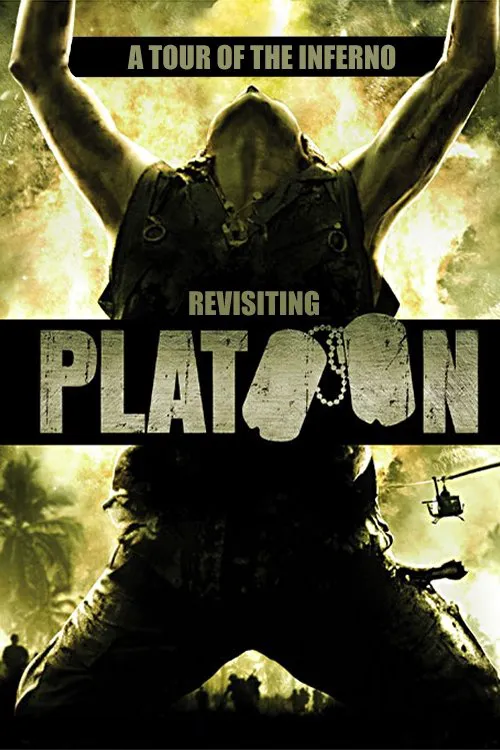A Tour of the Inferno: Revisiting 'Platoon'

Intrigue
A Tour of the Inferno: Revisiting 'Platoon' delves into the complexities of Oliver Stone's groundbreaking Vietnam War film, Platoon. The documentary, aptly titled 'A Tour of the Inferno', takes viewers on an in-depth journey into the making of this influential cinematic masterpiece. The film commences with an introduction to the creative process behind Platoon, detailing the initial stages of scriptwriting and Stone's unwavering dedication to authenticity. Stone's own experiences serving in the Vietnam War had a profound impact on his filmmaking approach, and this documentary provides insight into how he meticulously crafted the story, drawing from his own memories and those of his comrades. As the narrative progresses, viewers are exposed to the meticulous craftsmanship that went into bringing Stone's vision to life. Interviews with key figures involved in the production, including cinematographer Robert Richardson and actor Tom Berenger, offer fascinating insights into the technical and artistic decisions made during the production process. The camera crews' efforts to capture the eerie, immersive atmosphere of the jungle environment are showcased, highlighting the importance of visual storytelling in conveying the harsh realities of war. One of the central themes 'A Tour of the Inferno' explores is the significance of authenticity in film. The documentary highlights Stone's resolute commitment to depicting the Vietnam War as accurately as possible, rather than relying on romanticized or clichéd portrayals. This commitment translates into the film's stark, uncompromising tone, and viewers get a glimpse into the creative process that led to this groundbreaking decision. Furthermore, the documentary sheds light on the impact Stone's film had on the American public's perception of the Vietnam War. At the time of its release, Platoon sparked heated debates and conversations about the war's legitimacy and the experiences of those who fought it. Stone's willingness to tackle such a contentious topic head-on contributed significantly to the film's critical and commercial success. The interviews also touch upon the casting process, focusing on how Stone selected his actors for the roles. The ensemble cast, which included Charlie Sheen, Tom Berenger, and Willem Dafoe, delivered powerful performances that added depth and nuance to the narrative. By capturing the actors' memories and experiences during filming, 'A Tour of the Inferno' gives audiences a deeper understanding of the actors' motivations and what made their performances so convincing. A pivotal aspect of the documentary is its discussion of the technical innovations employed in Platoon. Stone made use of handheld cameras, which allowed for a more fluid, immediate feel to the action sequences. The documentary reveals how this decision not only captured the chaos and intensity of war but also underscored the sense of claustrophobia and disorientation felt by the soldiers. Another compelling aspect of 'A Tour of the Inferno' is its exploration of the impact Platoon had on the Vietnam War's cultural legacy. As the film premiered, American audiences were finally confronted with a truthful portrayal of the war, one that challenged their entrenched perceptions and myths. Stone's film served as a catalyst for a more nuanced understanding of the conflict, fostering a climate of public discourse and reevaluation of the war's impact on American society. 'A Tour of the Inferno: Revisiting 'Platoon'' serves as a comprehensive testament to the enduring influence of this iconic film. By examining the creative process, the making of the film, and its impact on audiences, this documentary offers an enlightening exploration of the power of cinema to shape our understanding of the world and its complexities.
Critiques
Recommandations


